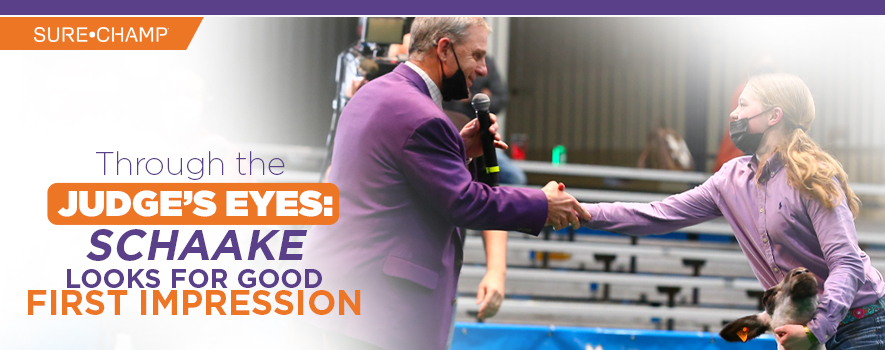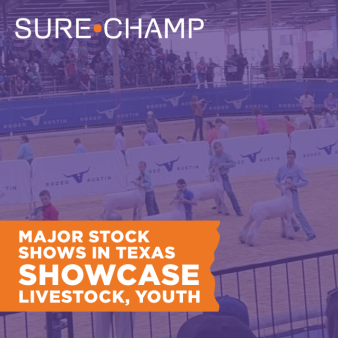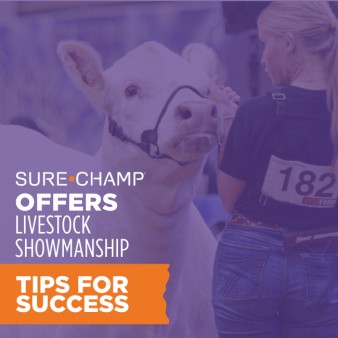
Trends can change with a blink of an eye when it comes to showing lambs, especially when it comes to chasing extremes. However, Scott Schaake prefers to stick to the basics when evaluating lambs and keep things “in the middle of the road.”
“I’m not the norm when it comes to sheep because I’ve never been a fan of extremes. These sheep that have 5-inch eyes, I’m not a fan of because I don’t think we need 5-inch eyes in sheep; I don’t think we need 20-inch eyes in steers. It doesn’t matter what species; I’ve never been a fan of extremes. History will tell us when we start chasing extremes, we get in trouble, so I always try to keep things middle of the road in terms of carcass merit. I don’t want them too lean; I don’t want them too fat; I don’t want too big of eyes; don’t want them too small. I just try to keep them between the white lines,” he said.
The Kansas State University Associate Professor has judged shows in more than 40 states, Canada, Mexico and South America. As the livestock judging coach at K-State from 1992 to 2013, he coached five consecutive National Champion Teams. His youngest son, Shilo, also showed lambs competitively.
Keep it Simple
Schaake likes a market lamb to have eye appeal combined with adequate muscle and structural correctness. The lamb needs to have a certain presence when it walks into the ring and be eye catching without sacrificing muscle.
“I still want some sheep with some frame, long-necked, jet-leveled topped and good feet and legs. They still have to have muscle; I’m not going to use a reindeer, but my preference is as long as they have enough muscle, and they have all the bells and whistles for quality, balance and structure and acceptable fat thickness, I’m all about that kind. And with shag – it’s not important but it adds to the quality look. Yeah, we can look through the hair, we can look through the shag, we can look through the hide, but it is still part of the piece that aids to the overall look of the puzzle. It’s one of those things when Shilo was showing sheep, we’d get frustrated that we didn’t have enough leg wool, but it is pretty important,” he said.
He also appreciates a youthful appearing animal, regardless of which species he is judging, and said he feels that exhibitors have gotten wrapped up in feeding their show stock too long for “real world” or industry standards just to meet certain criteria such as bone. He is not looking for a big square-headed, short-necked, round-boned lamb that would not fit into the industry.
“In the show world, I like an animal to look youthful and one that looks like it grew because it had the genetics to grow, not because they finally weighed 140 pounds, at 18 months old, in the case of a market lamb,” Schaake said. “The reflection is that we are chasing something that doesn’t make sense – like big bone. And when I see a calf being born with big bone, I’m running for the calf jacks!”
He evaluates breeding ewes much the same way, but with even more emphasis on skeletal design, rib shape and structure because there are a lot of heavy muscled rams that will contribute their genetics to create heavy muscled offspring. He reminds exhibitors that length of neck is often an indicator of length of loin, so a long-necked lamb or ewe is desirable.
Make an Impression
“I always told Shilo I wanted that lamb to look like a thoroughbred getting ready to load into the gate at the Kentucky Derby. That’s what I want to see when they hit the ring. A lamb with presence that says, ‘look at me. I’m the one!’”
Schaake said that first impression into the ring is crucial when he is evaluating a class of lambs, and he admits it is often to the advantage to the older or taller exhibitors who have better control over their lambs. But his advice to overcome that is to practice at home every day. Every time you practice, he advises to keep that lamb’s head popped up so they are used to walking with it that way, which helps with that first impression that he is looking for. He also feels it is better to evaluate the lambs on the move when perhaps the showmanship is slightly taken out of the equation.
Another way to make improvements is to find a mentor early on.
“Work with people who are reputable and willing to help you and will help you learn about the industry,” Schaake said.
Be True
Schaake was fortunate to grow up in an era when the “godfathers of the livestock judging” were judging shows and said he watched and learned from them, eventually becoming a student and a colleague of a few of them at Kansas State. As with any judging job, he knows he isn’t going to make everyone happy, but he tries his best to follow the examples of the role models he had.
“Don Good. Harlan Richey. Herman Purdy. Miles McKee, Calvin Drake. Those are the greats of the judging world. I loved watching Miles and Don judge shows and thought man, wouldn’t it be cool to be like them someday? They did it with integrity. We know when we go into the ring, we aren’t going to make everybody happy, but as long as we give an honest evaluation and an honest opinion, and I always felt that those guys that were the greats back then did that. No matter where you stood in class, you felt like you got a fair shake. Those are the guys I always looked up to,” Schaake said.
Remaining true to his teachings by some of the greatest livestock evaluators of all time, Schaake knows what he wants when it comes to evaluating sheep shows. In his eyes, the lamb needs to come into the ring with a presence about it. That presence starts with the exhibitor at home as they work every day to #PreptoWin. The lamb needs to be long-necked, long-bodied, structurally sound with adequate muscle and fat. And it needs to have balance and eye-appeal, while being youthful in its appearance and a lamb that will meet industry standards. It needs to be one that he wants to stand behind at the backdrop.

